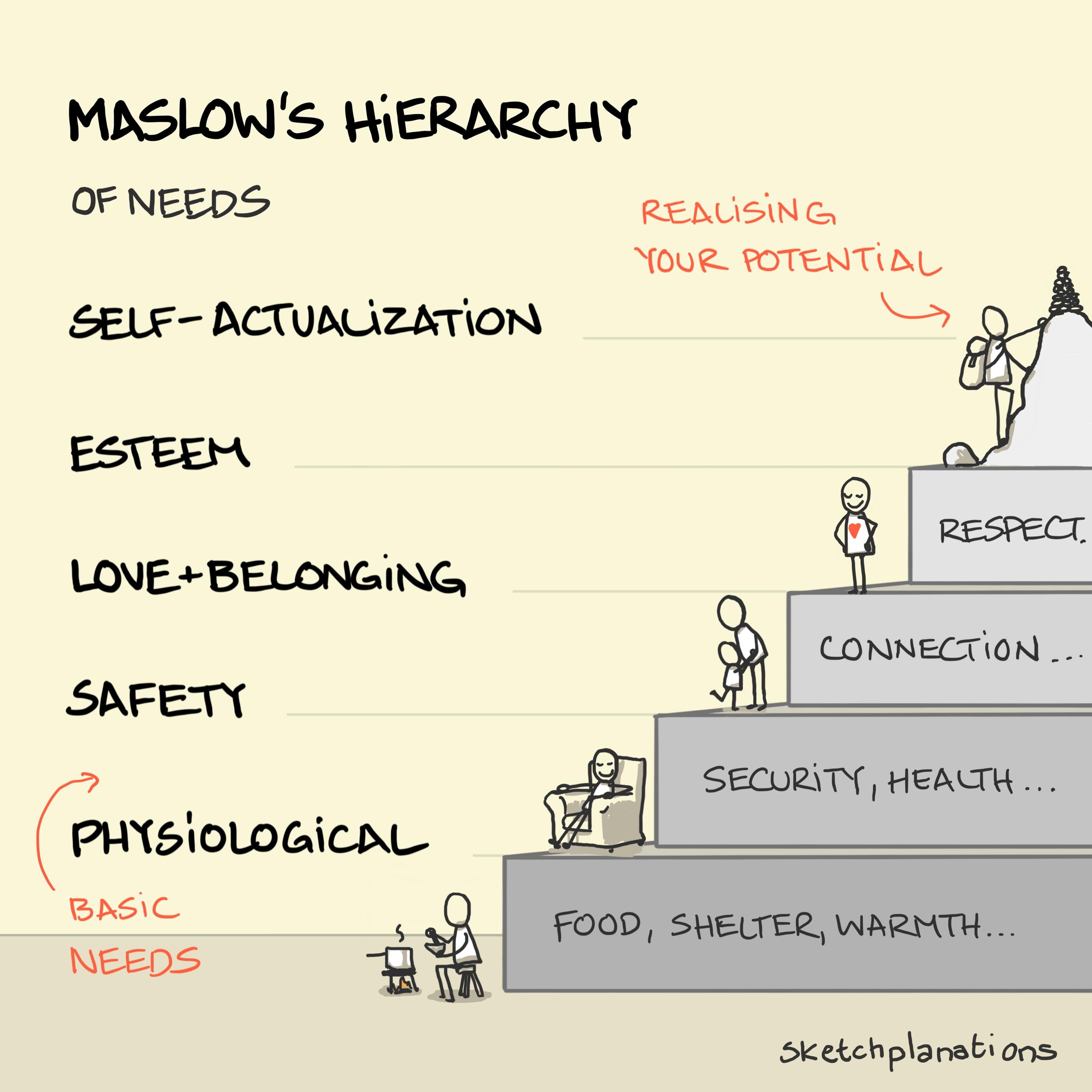Maslow's hierarchy of needs

- Prints
- Copied!
👇 Get new sketches each week
Maslow's hierarchy of needs, or Maslow's pyramid of needs, was created as the basis for a theory of human motivation by the psychologist Abraham Maslow shared in a 1943 paper . He was interested in what gives our lives meaning and what makes people happy — particularly in the context of a world increasingly driven by consumerism.
He suggested there were our basic needs and our higher level needs — psychological, spiritual, and growth.
In the basic needs you have physiological needs such as not being hungry, thirsty, or cold. Then we have our safety needs such as being free from the threat of violence, or being healthy.
Then we have the higher-level needs of love and belonging including friendship, connection, family. Then esteem needs such as self-respect and self-esteem. And finally our need for self-actualization — reaching our potential, achieving mastery, or being the best we can be.
Maslow continued to refine his original framework. For all its flaws — it always provokes discussion and counter-arguments in my experience — it's remained a clarifying and remarkably enduring model.
If you're designing for needs I prefer Patnaik's hierarchy of needs.

